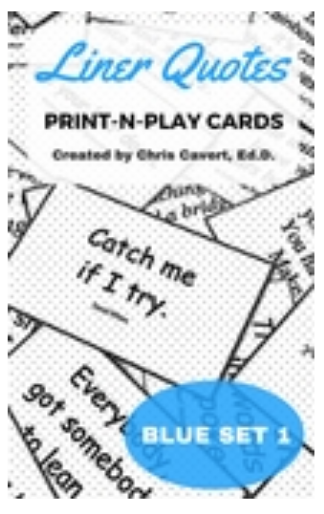Needs & Numbers: This one plays well with 8 to 12 participants in a group with 16 to 24 numbers in the set. Multiple groups can play at the same time.
Objective: The tossable object must be thrown through the sequence of numbers in order from 1 to 24 (or 30, or??). [In the video above, the group is learning the activity using numbers 1 to 12.] Basically, the more numbers, the longer the activity.
- The roles in this activity include a timer, a hoop-holder (a.ka., The Hoopster), throwers, and catchers. Players are allowed to take on multiple roles, for example, the timer can also be a tosser or catcher, and catchers can be throwers. Exception: The hoop-holder cannot catch or toss the object (but this person could be the timer - tricky, but possible).
- THE THROWING RULE: All throws must be made from the appropriate number in the sequence while the thrower is standing ON the number..
- THE CATCHING RULE: Catchers do not have to be standing on a number.
- THE HOOP-HOLDER RULE: The hoop-holder must be standing on/in the designated center spot/area at all times while holding the hoop. The holder can move about on/in this area moving the hoop to where it needs to be, but must have both feet on/in this area when the object goes through the hoop from one side to another. (An option can be to require at least "one foot" in the area at all times - this rules is used by the group in the video.)
- When throws are made from one side to another (odd to even, or even to odd), the object must go through the hoop. If the object does not make it through the hoop (e.g., misses going through the center of the hoop or hits the hoop itself and the object falls to the ground) it goes back to the thrower (standing on the appropriate number) to make another attempt. Throws are made from the same number until the object goes through the hoop.
- The object starts in the hand(s) of one person standing on the number 1 spot.
- Time starts when the timer says "GO!" When one player has the object in hand and is standing on the highest number in the game (after the object has been thrown through the sequence of numbers in order), the time stops.
|
As noted above, allow your group multiple attempts to see what improvements they can make. When I have the time, I like to let my groups make as many attempts as they want and stop when they believe they have accomplished their "best" time. I like to ask, "Is this the best this group can do?" It's interesting to see how many attempts are made by a group in order to determine what their 'best' can be (at that moment).
|
All the best,
Chris Cavert, Ed.D.








 RSS Feed
RSS Feed